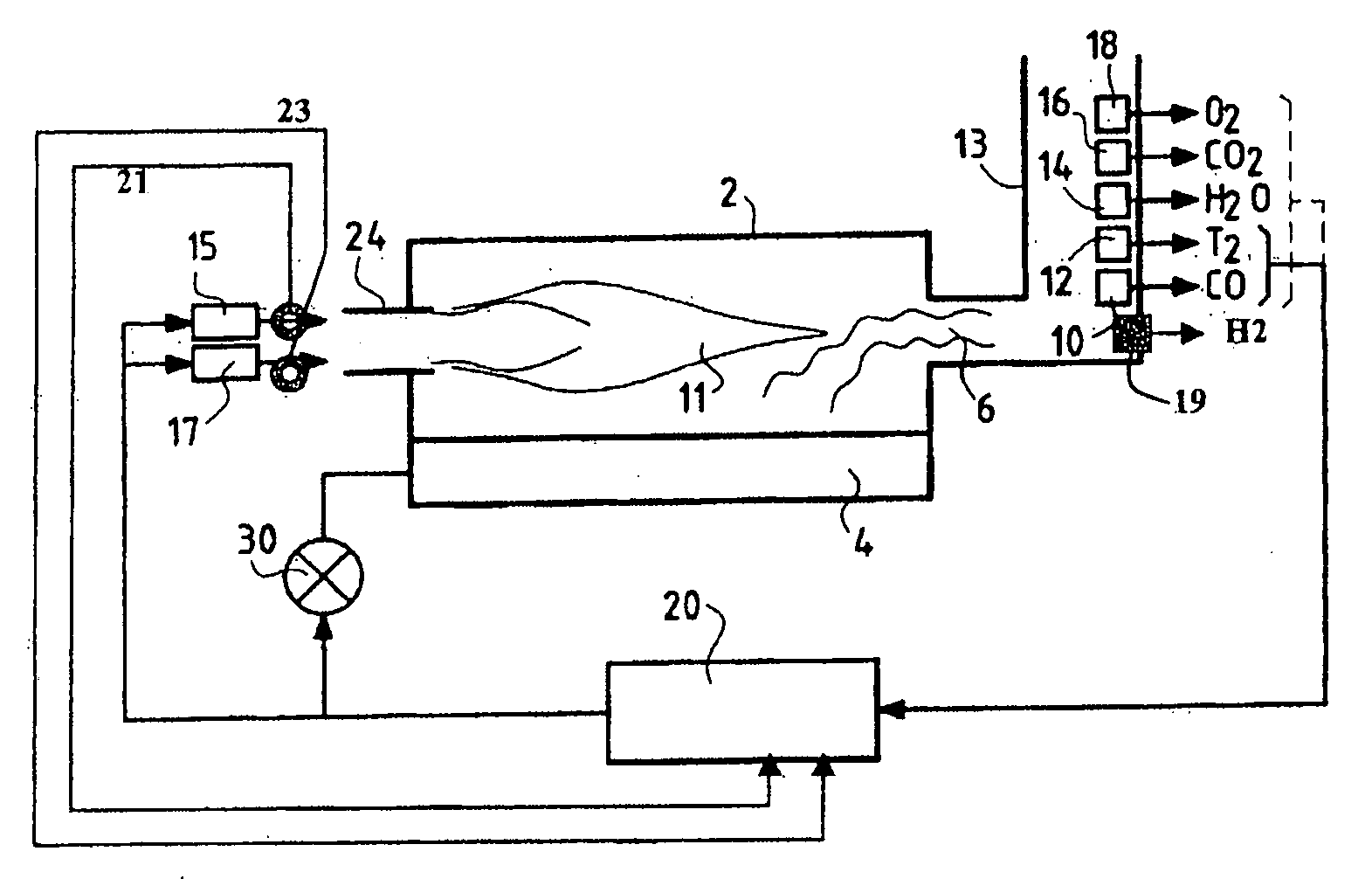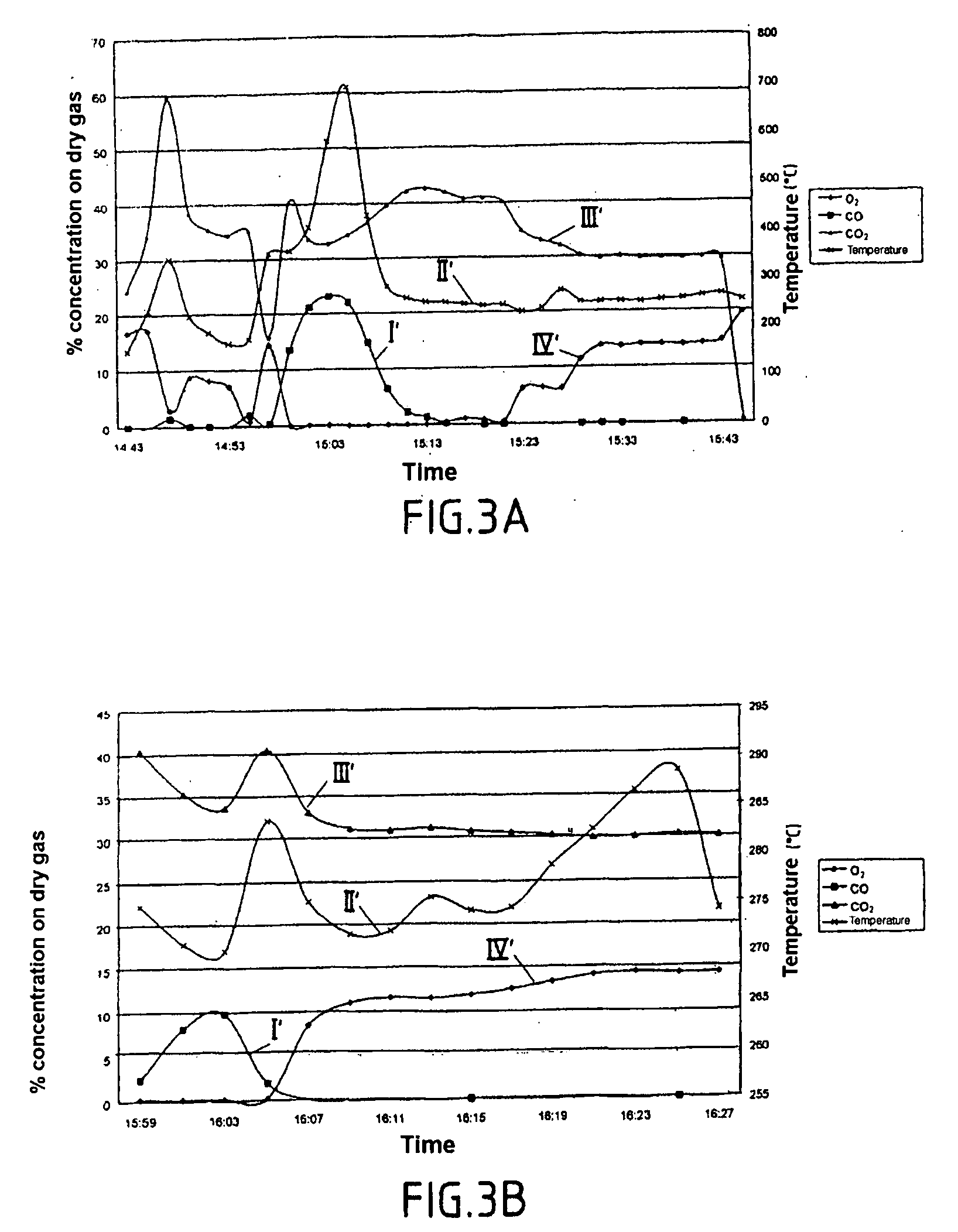Aluminum melting method using analysis of fumes coming from the furnace
a technology of aluminum melting furnace and fume analysis, which is applied in the direction of furnace safety devices, control devices of furnaces, incrustation removal devices, etc., can solve the problems of inability to measure and control many phenomena and parameters, inability to uniformly heat up, and metal loss during melting not only in the oxidized layer itself, so as to achieve the effect of easy detection
- Summary
- Abstract
- Description
- Claims
- Application Information
AI Technical Summary
Benefits of technology
Problems solved by technology
Method used
Image
Examples
Embodiment Construction
[0064] According to the invention, variations in carbon monoxide (CO) concentration in the flue gases exiting the furnace are detected and the temperature variations in the flue gases are measured.
[0065]FIG. 1 shows schematically a furnace 2 in which an aluminum melt pool 4 is obtained by melting aluminum scrap. A burner 24, fed with an oxidizer fluid (for example oxygen) and a combustible fluid (for example a natural gas), produces a flame 11 for reaching the desired temperature in the furnace.
[0066] Several burners may also be employed.
[0067] The references 15 and 17 furthermore denote oxidizer feed means and fuel feed means, respectively.
[0068] Means 10 for measuring the variations in the amount or concentration of CO are placed at the exit of the furnace, more precisely in a flue 13 for discharging the flue gases 6.
[0069] Means 12 also allow the temperature variations to be measured at approximately the same place.
[0070] There may also be means 14, 16, 18 for measuring the...
PUM
| Property | Measurement | Unit |
|---|---|---|
| temperature | aaaaa | aaaaa |
| temperature | aaaaa | aaaaa |
| melting point | aaaaa | aaaaa |
Abstract
Description
Claims
Application Information
 Login to View More
Login to View More - R&D
- Intellectual Property
- Life Sciences
- Materials
- Tech Scout
- Unparalleled Data Quality
- Higher Quality Content
- 60% Fewer Hallucinations
Browse by: Latest US Patents, China's latest patents, Technical Efficacy Thesaurus, Application Domain, Technology Topic, Popular Technical Reports.
© 2025 PatSnap. All rights reserved.Legal|Privacy policy|Modern Slavery Act Transparency Statement|Sitemap|About US| Contact US: help@patsnap.com



